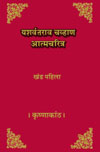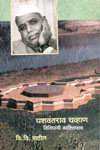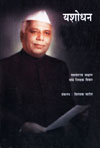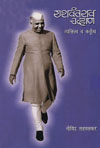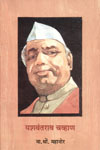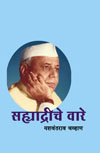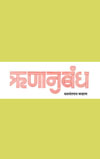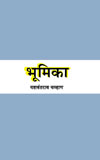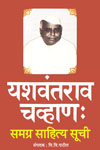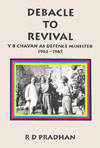In the latter part of the period, that is to say, from 1946-47 to 1951-52, the expenditure went up from 5 crores and 72 lakhs to 9 crores and 8 lakhs. The explanation that my hon. Friend Shri Bhapkar tried to give in this connection is rather unfair to himself. If we try to go into the causes of this increase in expenditure, it will be seen that the explanation that he gave was incorrect. It was a too simplified explanation. This process of increase in expenditure during an exceptional period is not such a process that it can be explained away by such a simple explanation. It is a process the reasons for which are economic, social and political. If the hon. Member realises that these are the reasons for the increase in expenditure during this period, I am sure he will come forth and say that this increase is certainly justifiable. What are these reasons? After 1946-47, the area and population of Bombay State have increased by nearly one-third. As a result of that we had to increase the establishments and increase the number of police stations. Then again, there was the question of revising the pay-scales and dearness allowance. The hon. Member Shri Jadhav who preceded me just now complained that the lower staff of the Police Department is not well paid. I think that is a hackneyed argument that is usually advanced without looking into facts. If he compares what is paid to the lower staff in this State with what is paid in other States and also compares what was paid before 1946-47 and what is paid now, he will have to admit, if he has any regard for truth, that what is being paid today is certainly reasonable. This is one of the causes why the expenditure on the police has increased. If the police force which is an instrument of law and order in any State is to be efficient, then such an increase in expenditure on the police is justifiable. This point was discussed in this House on a previous occasion and then many of us were convinced that the increase in expenditure on the police force on account of the increase in pay-scales and dearness allowance that were sanctioned to them was certainly reasonable. This is one of the reasons why the expenditure on the police has gone on increasing.
There is the third reason for the increase in the expenditure. In order to make our police force more efficient and effective we must allow it to have modern, scientific and mechanical instruments. Our police is equipped with the wireless, motor units, finger-print bureaux, etc. Expenditure on this account has gone on increasing. During this period there were disturbances of peace and there was the threat of a railway strike. On these occasions additional expenditure on the police had to be met. It can be seen that this additional expenditure, as compared with the general increase in the police expenditure, is negligible. The implication of my hon. Friend Shri Bhapkar’s repeated stress on the increase in police expenditure seemed to be that social services in this State are being starved. The hon. Finance Minister has in this budget speech dealt with this question at great length. However, since the hon. Member Shri Bhapkar tried to compare the police expenditure in Madras State with the expenditure on police in this State, I should like to place before the House the per capita expenditure on social services in this State and in Madras State. Let him compare these figures also. In 1949-50 the per capita expenditure on social services in Bombay was Rs 7-12-0, in Madras it was Rs 3-5-0 in LIP., it was Rs 2-15-0; in 1948-49 in Bombay it was Rs 6-15-0, in Madras Rs 3-3-0, in U.P. Rs 2-8-0; in 1947-48 in Bombay it was Rs 5-6-0, in Madras Rs 2-12-0 and in U.P. Rs 1-9-0. I would like the hon. Member to compare these figures for his own satisfaction and I am sure he will have to admit that though expenditure on the police in this State increased and the increase was reasonable and necessary, items of social service not starved.

